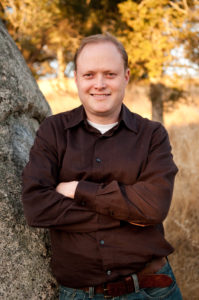Author Jeff Wheeler joins us today to talk about his new Kingfountain Series. If you missed my review of The Queen’s Poisoner, the first book in the series, you can check it out here.
Author Interview with Jeff Wheeler
If a parent had to choose one of their children to die, who would they pick? I know it’s an awful-sounding question and being a parent of five kids myself, it would certainly be an anguishing experience. But it was also a thought that I believed would instantly help my readers connect with Owen Kiskaddon and his family. Even though they are from a different world full of magic and secrets, at its heart this is a story about families and how it can tug at your heart strings.
It’s definitely a tough question, but I think you’re right – it does help connect us to the story and to Owen. The best stories wrestle with hard questions. Was there anything about The Queen’s Poisoner that came as a surprise to you as you were writing it? Something that emerged unexpectedly?
Absolutely and the surprise was an eight year-old girl named Elysabeth Victoria Mortimer. When I had originally dreamed up this story several years ago, she wasn’t part of the cast. Normally I get to learn about my characters over time as they stew inside my brain and are slowly developed. She struck my imagination like a lightning bolt, an Athena bursting from Zeus’ head. She absolutely changed the story and added to several poignant scenes. It was she who taught her friend Owen how to be brave.
How cool! I liked her from the moment she stepped into scene. It’s hard to imagine The Queen’s Poisoner without her. What do you most hope that readers take away from the story?
It’s my hope from all my books, and especially this one, that a story can be exciting, suspenseful, emotional, and profound without relying on provocative sex scenes, strong language, or graphic violence. I think some readers are even more cautious now about picking up a new book for fear of what mature themes are going to be inside. I want parents and grandparents as well as younger folk to enjoy reading all my stories. Literature is more interesting when people share it with each other and talk about it. It shouldn’t just be a guilty pleasure.
That’s a great take-away, and obviously something near and dear to my heart here at The Story Sanctuary. And you’re right – emotional power doesn’t have to come from violence, profanity and graphic sex. You’ve certainly proved it in your novel. What’s your favorite moment in The Queen’s Poisoner? What makes it so special?
It’s the ending, which I don’t want to spoil for the readers, so don’t worry, I won’t. I really like trying to be unpredictable and weaving things into my stories that make a reader stay up to all hours of the night trying to finish it. It needs to deliver something unexpected but also an emotional payoff. This book doesn’t end on a cliffhanger but I believe with a moving resolution that plays out like a beautiful piano chord at the end of an especially intense crescendo. It made it so that the book stands all on its own even though there are sequels.
I love that. It’s definitely important to me as a reader that a story has a satisfying ending, even if there are bits left unresolved and making me desperate for the sequel. Let’s talk about your readers. What is one question about your writing that you are often asked by readers?
When is your next book coming out? I get asked this a lot, even though I’ve been publishing three books a year and try to have a short window in between them. I get that folks love to binge read and it’s great having loyal fans who anticipate new novels and jump in as soon as they are released. I wish I could write as fast as they can read!
Ha! That’s great – definitely shows you’re doing something right. 🙂 I know for me, being a writer has changed how I read things. Do you do a lot of reading? Is there an up-and-coming author you’re following with interest right now? Can you tell us about an author or novel you think deserves a greater spotlight?
I’m not a big sci fi reader, but one of my fans pointed me to Josi Russell’s novel Caretaker and I really enjoyed it. It’s the story of a space ship bound to a distant planet for colonization. But the ship’s ‘Caretaker’ dies and the computer chooses a man to fill his shoes who hasn’t been trained for that kind of role. It meets my definition of a clean read (no sex, swearing, or graphic violence) and it had the kind of Virtus plot that really appeals to me (a few years ago I wrote a blog called “A Manifesto on Virtue” and talked about the Roman concept of Virtus). Caretaker was a great read and I’m looking forward to more from this author.
Sounds like a great story – and I appreciate the recommendation for a clean read! What are you most looking forward to reading next?
Charlie Holmberg’s newest novel Magic Bitter, Magic Sweet. I love all of Charlie’s books and I got an early peek at the first six chapters putting together the first issue of my resurrected e-zine Deep Magic. Folks are in for a “treat” with this one (pun intended…the story is about magical baked goods)
Yum! That sounds like a lot of fun. I’ve had Holmberg’s The Paper Magician on my reading list for some time. I love the sound of this latest book, too.
Thanks for joining us today and taking time to share a little more about your writing and reading. I look forward to more of the Kingfountain Series. I’m excited that book two is already out.
